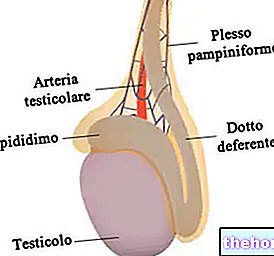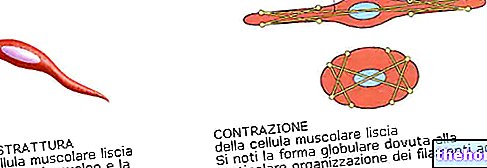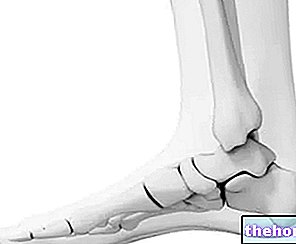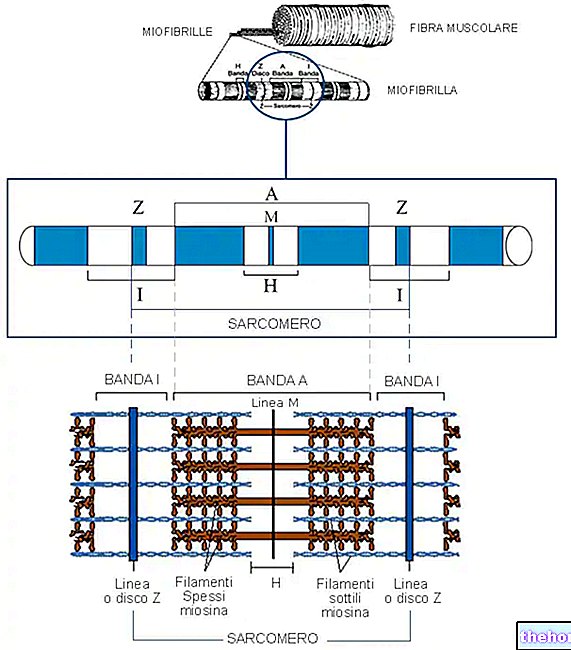Obesity is not a simple aesthetic alteration, but a real pathology that increases the risk of many serious diseases by reducing the expectation and quality of life. The increase in morbidity associated with severe overweight is mediated by endocrine and metabolic alterations favored by a sedentary lifestyle. and an incorrect lifestyle. Also in this context, physical activity is the ideal means of promoting weight loss, maintaining the weight achieved and opposing these dangerous hormonal changes.
Endocrine modifications linked to obesity
GH: the obese subject produces less GH than a normal weight individual. Although the basal values are within the normal range, the secretory peaks are less frequent and the total production is therefore lower.

Exercise is in itself a powerful stimulus for GH secretion.
The response of this hormone becomes maximum during anaerobic exercises with high production of lactic acid. However, a significant increase in plasma GH levels is already observed for low intensity exercises (50% of VO2max) which are certainly more suitable for the obese subject.
Thyroid hormones: Plasma levels of T4 (inactive form) are normal, but turnover of T3 (active form) increases. The increased production of thyroid hormones is therefore promptly neutralized by the increased rate of disposal.
These hormones are the main regulators of the body's metabolism.In case of hypothyroidism (reduced production of T3 and T4) the basal metabolism is reduced by 40%; on the contrary, a hyperthyroid subject has an accelerated body metabolism, up to 25-50% higher than the norm.
In some cases obesity is caused precisely by a reduced thyroid function. Physical activity, for its part, cannot do much to bring the situation back to normal. However, regular exercise, regardless of the presence or absence of thyroid alterations, tends to increase metabolism, increasing muscle mass and improving overall metabolic activity.
Endorphins: Basal plasma levels return to normal, but the circadian rhythm disappears and there is little response to secretory stimuli. These hormones are endowed with a powerful analgesic and exciting activity; their action is comparable to that of morphine.
Physical activity is a powerful stimulus for the secretion of endorphins and this explains the sense of well-being and satisfaction that, despite the profuse fatigue, appears at the end of a physical exercise.
ACTH and cortisol: the circadian rhythm is preserved, but the turnover increases. Cortisol, produced in response to the pituitary hormone ACTH, has district effects as it stimulates the development of subcutaneous adipose tissue in the trunk and abdomen. Although cortisol secretion increases during sporting activity, exercise does not significantly influence basal plasma levels.
Gonadal axis: in males, plasma levels of testosterone and some proteins responsible for its transport (SHBG) decrease. While free testosterone levels are still normal, on the other the obese have slightly higher levels of estrogen. In fact, an enzyme called aromatase is concentrated in adipose tissue, capable of transforming testosterone into estradiol.
Estrogens are typically female hormones capable of influencing the body distribution of adipose tissue concentrating it above all in the thighs and buttocks.
In women, obesity correlates with premature menarche (appearance of the first menstrual flow) with frequent disturbances of the cycle and greater tendency to follicular atresia. Hirsutism and ovarian polycystosis are common.
Insulin: The risk of developing type II diabetes mellitus is double for every 20% weight gain of normal.
In the obese subject, the onset of diabetes is linked to the preceding insulin resistance. In this first phase, a true antechamber of diabetes, the binding capacity of insulin decreases, due to a decrease in the number and affinity of membrane receptors. A because of the difficulties that glucose encounters in passing from the bloodstream to the tissues, blood sugar increases. Despite the high blood concentration of glucose, the cells are starving because only a small portion of it can reach them. This lack of glucose at the cellular level stimulates the liver to produce new glucose and to release additional amounts of it into the circulation. We thus enter a vicious circle from which the organism tries to escape by increasing the production and secretion of insulin. Arriving at a limit point, the pancreatic cells responsible for the production of this hormone undergo, due to too much work, a decline functional, opening the doors to diabetes.
Considering that about 80% of the ingested glucose is used by the muscle, we can understand the role of physical exercise in the prevention of diabetes. The regular practice of aerobic activities improves the cellular utilization of glucose and enhances the action of insulin, significantly reducing the risk of developing type 2 diabetes mellitus.
Physical exercise also improves blood lipid balance and cardiovascular function, reducing the risk of cardiovascular disease. At the same time there is a reduction in the risk of developing some forms of cancer (colon cancer) and an overall improvement in mood (sport reduces the appearance of depression and anxiety associated with overweight).
Exercise prescription and obesity
Physical activity is a valid support to calorie restriction which, in the absence of its contribution, fails in the vast majority of cases. The obese himself should realize that his severe overweight is the direct consequence of reduced physical activity.
Some argue that the increased appetite induced by exercise ends up opposing weight loss. In reality, as we have seen in the first part of this article, physical activity triggers a series of endocrine and metabolic changes, able to favor weight loss. weight loss regardless of the calorie content of the diet. Obviously an "excessive intake of food is opposed to weight loss, however it is good not to impose excessive calorie restrictions, which are difficult to bear both from a physical and psychological point of view.
The energy expenditure related to exercise is maximum for typically aerobic activities such as cycling, walking, long-distance swimming or cross-country skiing. These sports are also particularly suitable for overweight subjects, as they do not subject the skeletal system and the cardiovascular to the high stresses typical of anaerobic sports.
The choice of physical activity is very important not only from a purely metabolic point of view but also from a psychological one. Forcing a person to carry out an activity that he does not like means increasing his repudiation towards something that he already perceives as hostile and frustrating. For the same reason it is good to avoid situations that can create embarrassment, highlighting instead the progress, even modest, made in the sport practiced.
Finally, we must not forget that, despite appearances, an obese person, even at a young age, could be the carrier of pathologies that require special precautions. A thorough investigation of the client's medical profile is therefore a must. Dialogue and collaboration with other professionals (psychologist, doctor, dietician, etc.) is also very important.






.jpg)





















